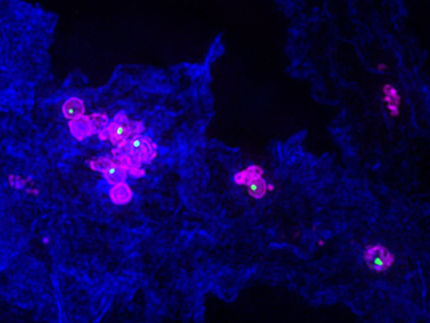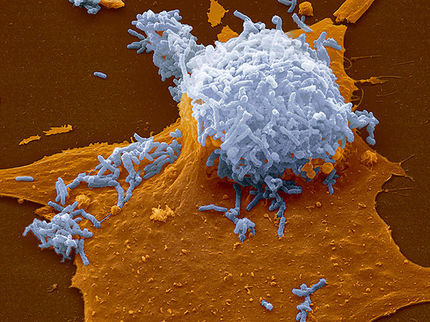"Bacteria-eating" viruses may spread some infectious diseases
Phage may be new therapeutic target
A strep-infected child in a daycare center plays with a toy, puts it in her mouth and crawls away. Another child plays with the same toy and comes down with strep.
Until now, scientists thought that disease-causing bacteria left on the toy was the culprit in transferring the disease from the first child to the second. New research at The Rockefeller University shows that the culprit sometimes might not be the bacteria but a virus that infects and destroys the bacteria. Called a bacteriophage, this "bacteria-eating" virus causes disease by transferring toxins and other disease-causing genes between bacteria.
The findings, reported in the July issue of Infection and Immunity, show for the first time that bacteriophage, or phage - previously thought not to be infectious to humans - may be a new target for fighting certain bacteria that produce toxins.
"Controlling the phage may be as important as controlling the bacteria," says senior author Vincent A. Fischetti, Ph.D., professor and head of the Laboratory of Bacterial Pathogenesis and Immunology at Rockefeller.
"It's possible that phage present in the saliva of a child or another individual can cause the conversion of an existing non-toxigenic organism to a toxigenic one," adds Fischetti. "We always believed that phage were not infectious to humans, but in a sense, they are."
Scientists classify certain bacteria such as those causing scarlet fever, diphtheria and E. coli O157 (a source of food poisoning in contaminated meats) as toxigenic, meaning that these microbes produce toxins - transported by phage - that cause disease.
People can carry colonies of bacteria, such as strep, without being sick if the microbe doesn't carry a toxin-encoded phage. But, when a toxin-producing phage moves to a nonvirulent bacterium, it carries with it a toxin gene that is part of the phage genome, and transfers that gene to the new organism. This process, called lysogenic conversion, transforms the harmless microbe into a virulent bug.
Scientists were not sure where the bacteria picked up the phage, until two years ago when Thomas Broudy, Ph.D., then a graduate student in Fischetti's lab, identified a factor in human saliva that is secreted from cells in the pharynx - the part of the alimentary canal between the cavity of the mouth and the esophagus - and causes the phage to become active and burst out of the bacterium.
"Since phage and the bacterium are out in the environment, it was thought that the microbe picked up the phage there," says Fischetti. "We now know that phage are designed to do this in humans, and not in the environment, by taking advantage of a human factor called SPIF to allow the transfer process to occur efficiently."
In the lab, Broudy added SPIF (soluble phage inducing factor) to lysogenic bacteria. SPIF mobilized the phage and the bacteria disentegrated, or lysed. Because the bacterium he was studying, Group A strep, is only found in the human throat, Broudy deduced that the phage was induced or activated there, and not in the environment.
"It makes sense that the phage would want to induce at a site where it would potentially find its host," says Broudy. "The system is designed so that when a phage-carrying strep goes into the oral cavity, the phage induces, where it is released to infect any non-toxigenic bacteria that can potentially be there, transferring the phage - and the toxin gene it carries - to other bacteria."
So then the question was, can a non-toxigenic organism that is found in the oral cavity become toxigenic if you add a bacterium that is carrying a toxin-encoded phage?
To answer this question, Broudy, first author of the new Infection and Immunity paper, and Fischetti took human pharyngeal cells cultured in a petri dish and added toxigenic and non-toxigenic strains of Group A strep. They found that the phage "jumped" from the toxigenic strain, causing the bacterial strain that was not carrying the phage to produce toxins. The Rockefeller researchers repeated the experiment in the throat of a mouse and obtained the same results.
Broudy also isolated a toxin-carrying phage and introduced it to a mouse carrying a colony of non-infectious strep bacteria. The result: the non-infectious bacteria became toxigenic.























































